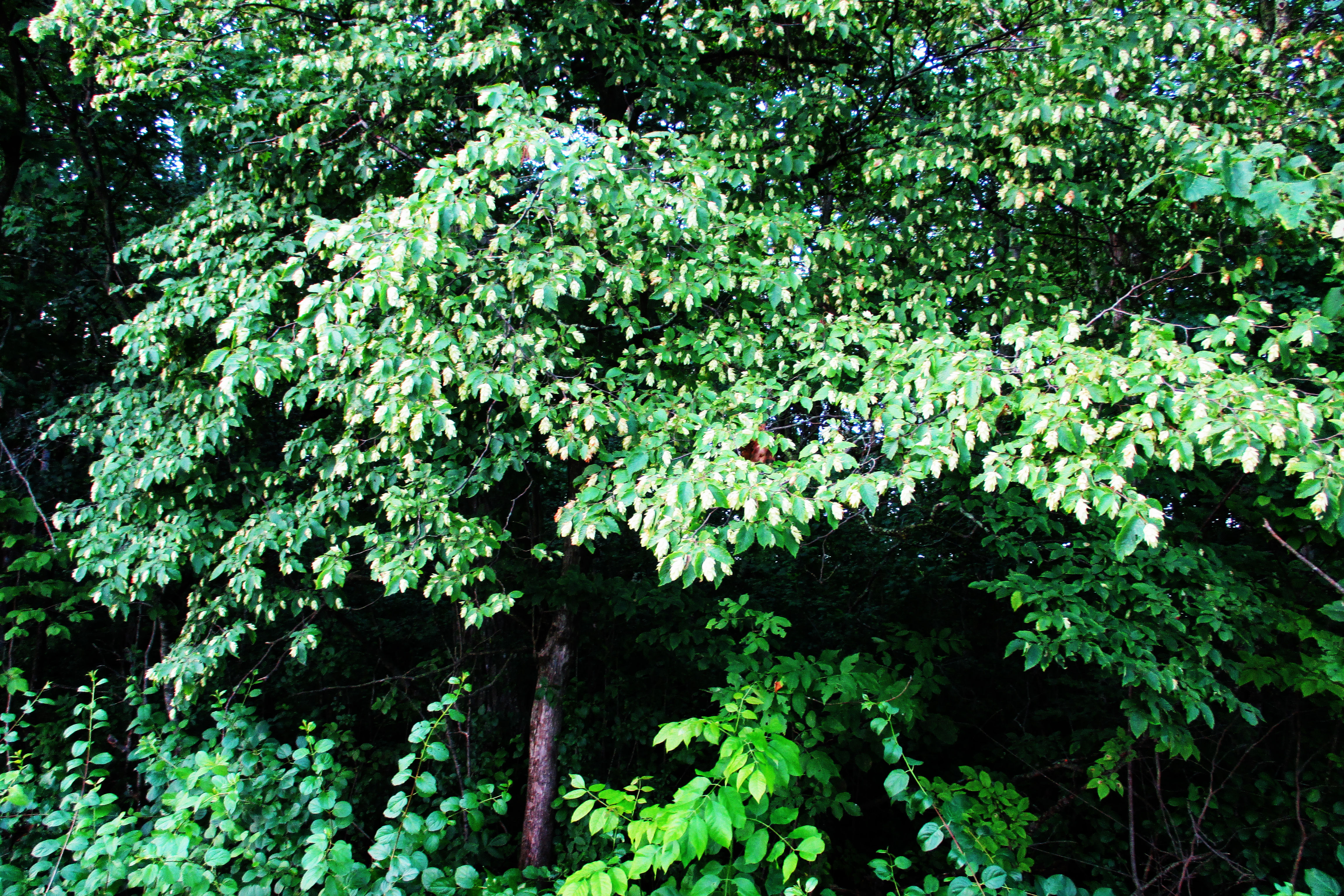This slender, deciduous tree in the birch family is an attractive and interesting addition to shady locations. Also known as eastern or woolly hophornbeam, American hophornbeam typically grows 20-35’ tall with a rounded crown, shaggy bark, and hop-like seed pods. It’s a very adaptable tree that’s found throughout Ohio as well as along the eastern United States from Florida into Canada. It thrives in part or deep shade, but it also does well in full sun and adapts readily to most soil types and to very dry, moist, or occasionally wet conditions. Its smaller size and tolerance for drought and heavy clay make it ideal for urban areas. It’s resistant to most insects, diseases, wind, and ice. The young plant grows at a medium-slow rate from a stately, pyramidal shape to a gracefully rounded shade tree. The fringy-edged leaves are similar to birch leaves, and the twigs and catkins are also birchlike. Hophornbeam takes part of its name from the unusual fruits that resemble those of the common hops used in the production of beer. “Hornbeam” may refer to the tree’s very heavy, strong wood being used as a yoke between two horned oxen. The common name may also be derived from the old English words horn, meaning “hard,” and beam, meaning “tree.”
Native habitats include dry, rocky forests; upland slopes; and well-drained, deciduous woods. Use this low-maintenance tree along driveways or streets, as a specimen or shade tree, or as an understory tree. Well-suited for butterfly, woodland, and native gardens. May also be planted close together to form a tall hedge.
Plant Characteristics:
Grows 20-35’ tall and 15-30’ wide.
Prefers part shade to deep shade but tolerates full sun.
Does best in most soils with good drainage, including clay, loamy, and sandy.
The male flowers appear in spring as pendulous, red-brown catkins in groups of 3 (like “bird’s toes”) and are present through winter; the female flowers appear as erect, light green catkins that are ½” long. Flowers are wind pollinated. The female flowers give way to hop-like fruits that are lime green in early summer, yellowish in mid-summer, and brown by late summer. Inside the dried, inflated sacs are flat, ¼” nuts.
Alternate, green leaves are ovate shaped and 3-6” long with doubly toothed margins, fuzzy stems, and drawn-out tips. Fall color is a mixture of orange, yellow, and brown.
Trunks are usually around 7-10” in diameter but may grow to 2’ in diameter. Young trees have smooth, reddish-brown bark that becomes grayish and shredded or flaky with age. Long, slender branches are horizontal and may droop at the ends.
Wildlife Value:
Possible host plant for larvae of red-spotted purple and eastern tiger swallowtail butterflies. Witches' brooms that sometimes occur on this tree provide a home to many invertebrates eaten by song birds, especially during winter. The buds and catkins are an important food source for grouses and wild turkeys, and the nuts are eaten by bobwhites, red and gray squirrels, cottontails, white-tailed deer, ring-necked pheasants, purple finches, rose-breasted grosbeaks, and downy woodpeckers.
Medicinal, Edible, and Other Uses:
Native Americans used the bark and inner wood to treat toothaches, sore muscles, coughs, and other ailments.
The wood is very close grained, heavy, and extremely hard. When metal was scarce, the wood was used to make wheel rims and sleigh runners. It’s used to make tool handles, fence posts, wedges for directional felling of trees, and firewood, although the trees are difficult to cut down.
Hophornbeam, American, Ostrya virginiana
We happily purchase or trade other plant material for locally gathered native seeds. Please provide pictures of the mature plant if possible, ideally fruiting or flowering for best ID.

